Looking to make the best of canceling our trip to Egypt, I found a flight from Bergamo to Tirana, Albania for $11. A few years ago, I read a book by Ismail Kadare entitled Fall of the Stone City (1). The novel is set in 1943 during World War II in the Albanian city of Gjirokaster. The city (in Southern Albania) is often called "the stone city" for the slate roofs common in the town (2).
Given the state of public transit in Albania (3), I opted to rent a car, and headed south for a drive of a little over three hours (4). Arriving at Gjirokaster, I saw the hotel up a narrow cobbled street (5).
As dusk approached, we wandered up the steep streets to the city center. Passing the Castle dominating the town, the Muezzin's sunset call for prayer rang out from the minaret of the central mosque (6). After dinner, we descended into a light fog walking back to the hotel, as the smell of wood fires lingered in the air on this windless night.
(1) The best-known 20th century Albanian novelist. The book was also well-translated.
(2) Gjirokaster is the author's hometown and the main street in town is Rruga Ismail Kadare. The town's most (in)famous native son is Enver Hoxha, the Communist dictator.
(3) While buses follow an approximate schedule, minibuses (known as furgon) depart when full. The railways are not running at all due to track deterioration (a).
(a) We saw a track crew working on the rails during our road trip in a project funded by the EU.
(4) Driving in Albania is not for the timid. Cars pass on two lane roads seemingly whenever they feel like it and vehicles pull onto the road with no concept of yield. Amazingly, we saw only one serious crash.
(5) "You're not going to drive up there, it's not a street," said my travelling companion. Seeing no place to park, I took a sharp left up and feathered the engine to avoid slipping or getting stuck on the cobbles (b).
(b) When asked where to park, the hotel host took the car keys and backed the car down to a spot about one foot from a steep drop into a ravine.
(6) Most mosque buildings in Albania are less than 30 years old. Enver Hoxha, the totalitarian Communist dictator from 1944 to 1985 razed most of them, with very few exceptions for mosques with strong historical/cultural value (c). He did the same with churches.
(c) About 50 mosques physically survived Communism in Albania out of an estimated 1,100 existing in 1944 (Ramet, Sabrina (1998). Nihil obstat: religion, politics, and social change in East-Central Europe and Russia. Durham: Duke University Press.)
Interplay of light, cloud, and shadow on the road to Gjirokaster
The hotel was up this street. Yes, it's a street ("rruga" in Albanian).
The muezzin's melodious call to prayer rang out at sunset.
Central Square decked out for Chistmas, Gjirokaster
Fading light
Painting of a scene from Kadare's Fall of the Stone City in a local restaurant. Big Doctor Gurameto encounters the commander of the invading German troops, Fritz von Schwabe.

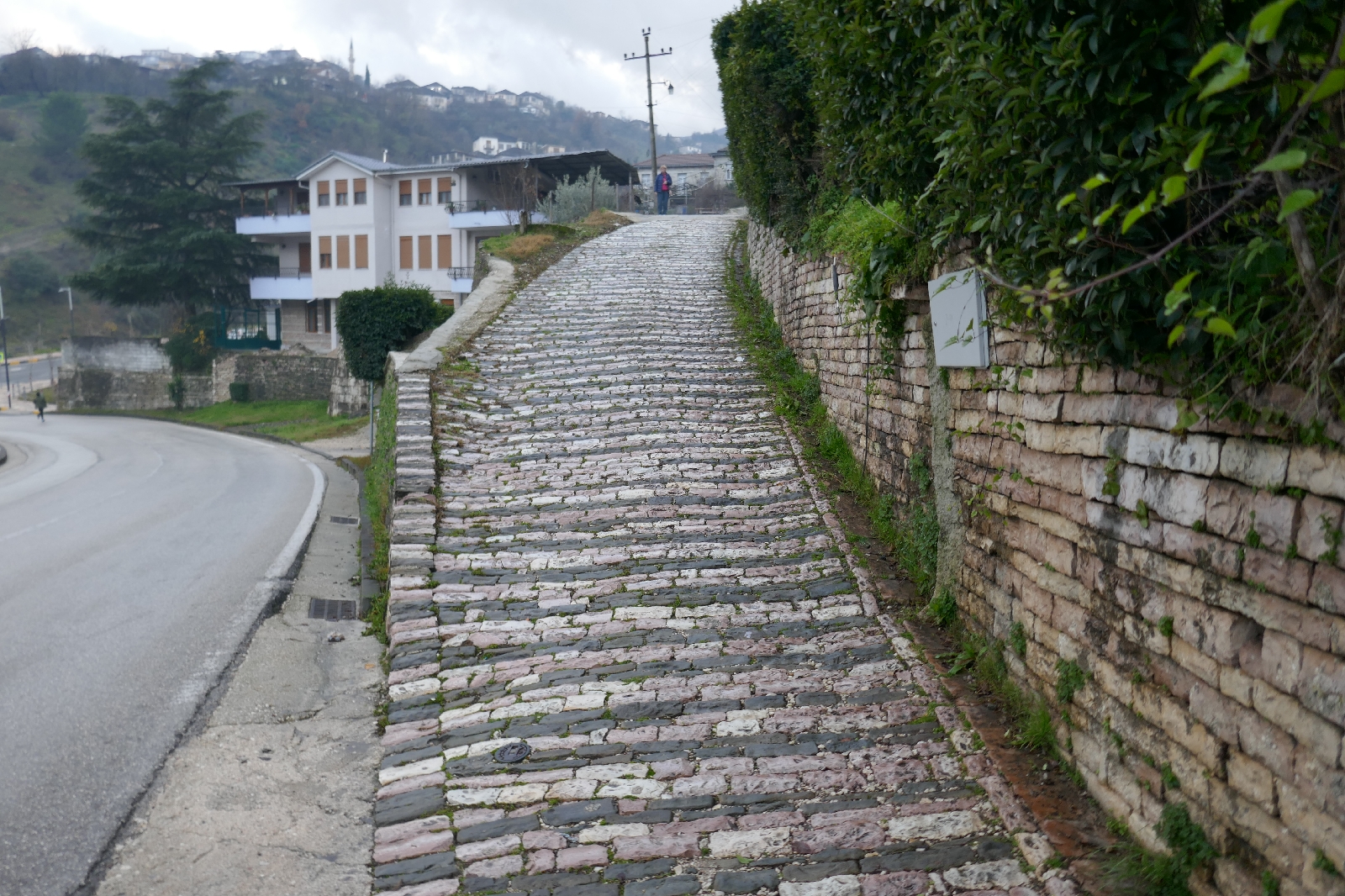




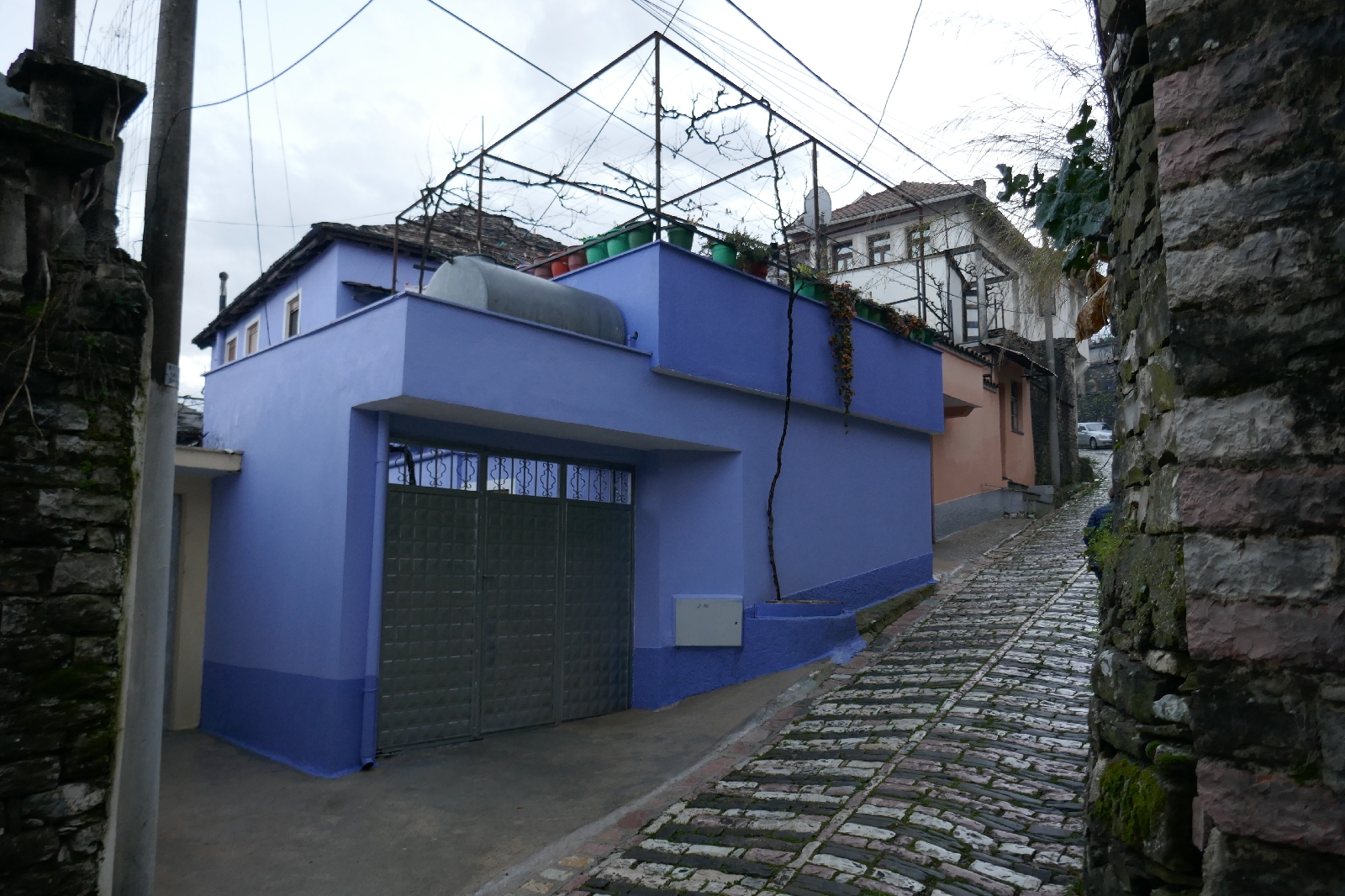


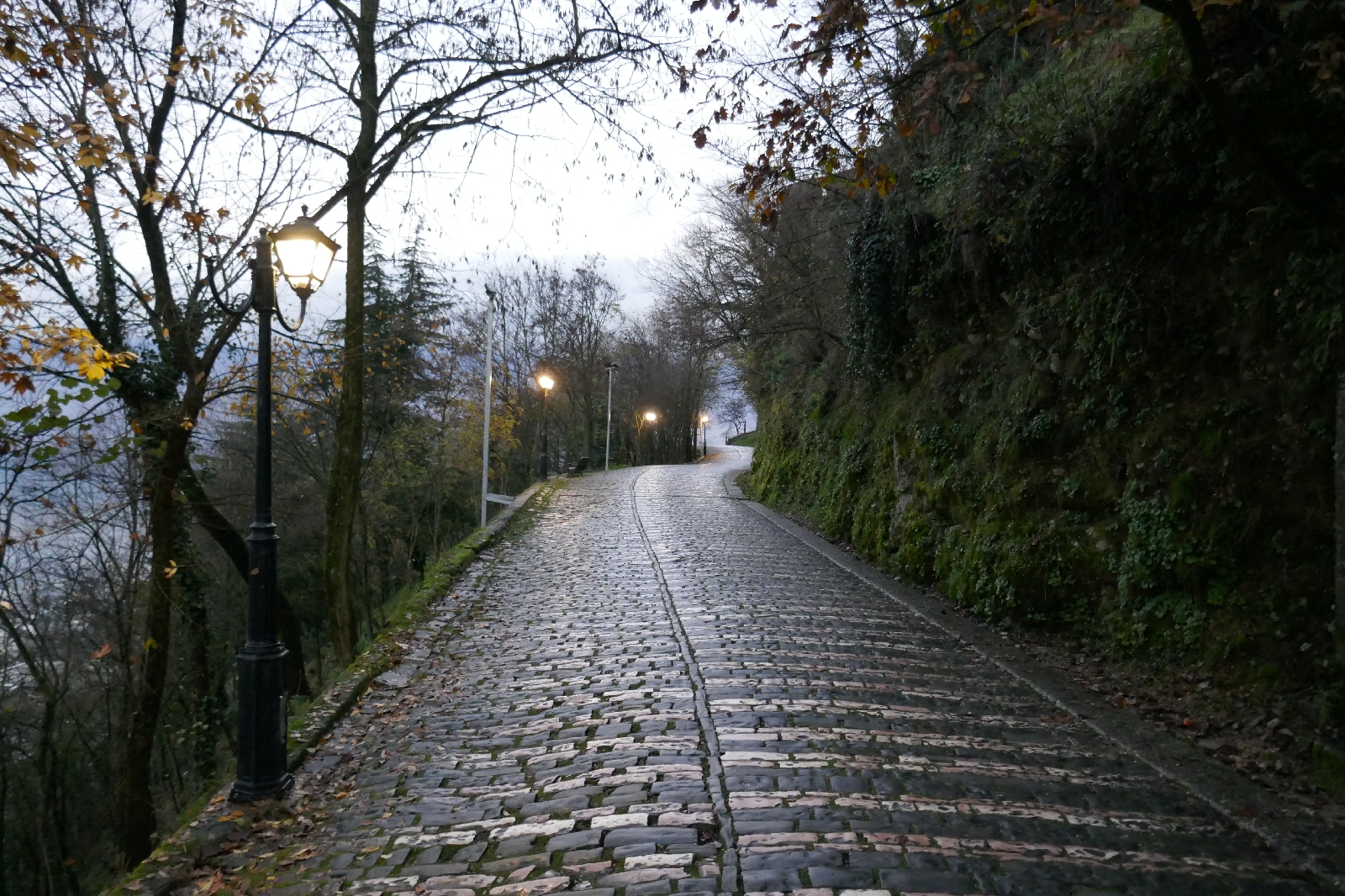

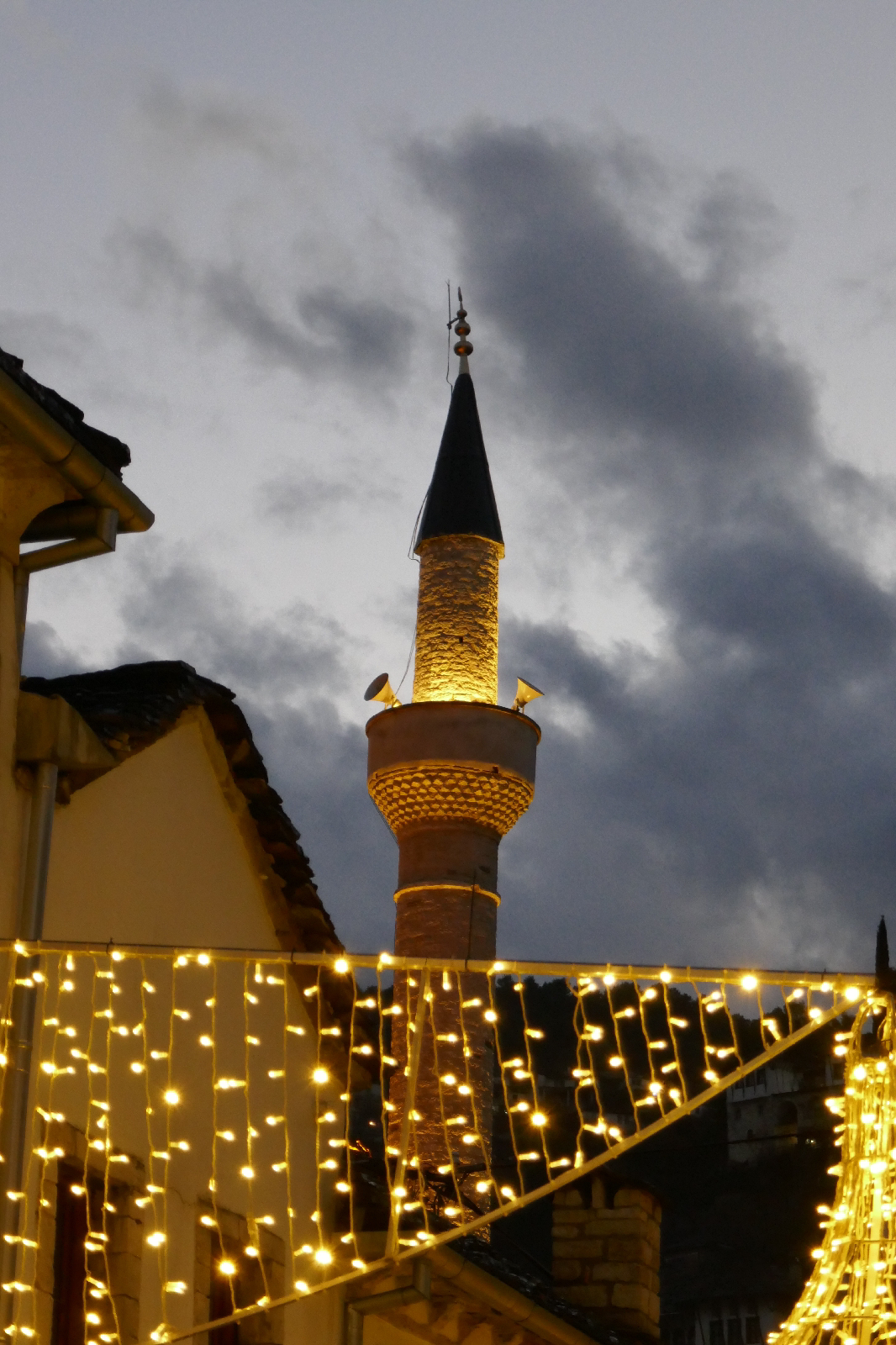

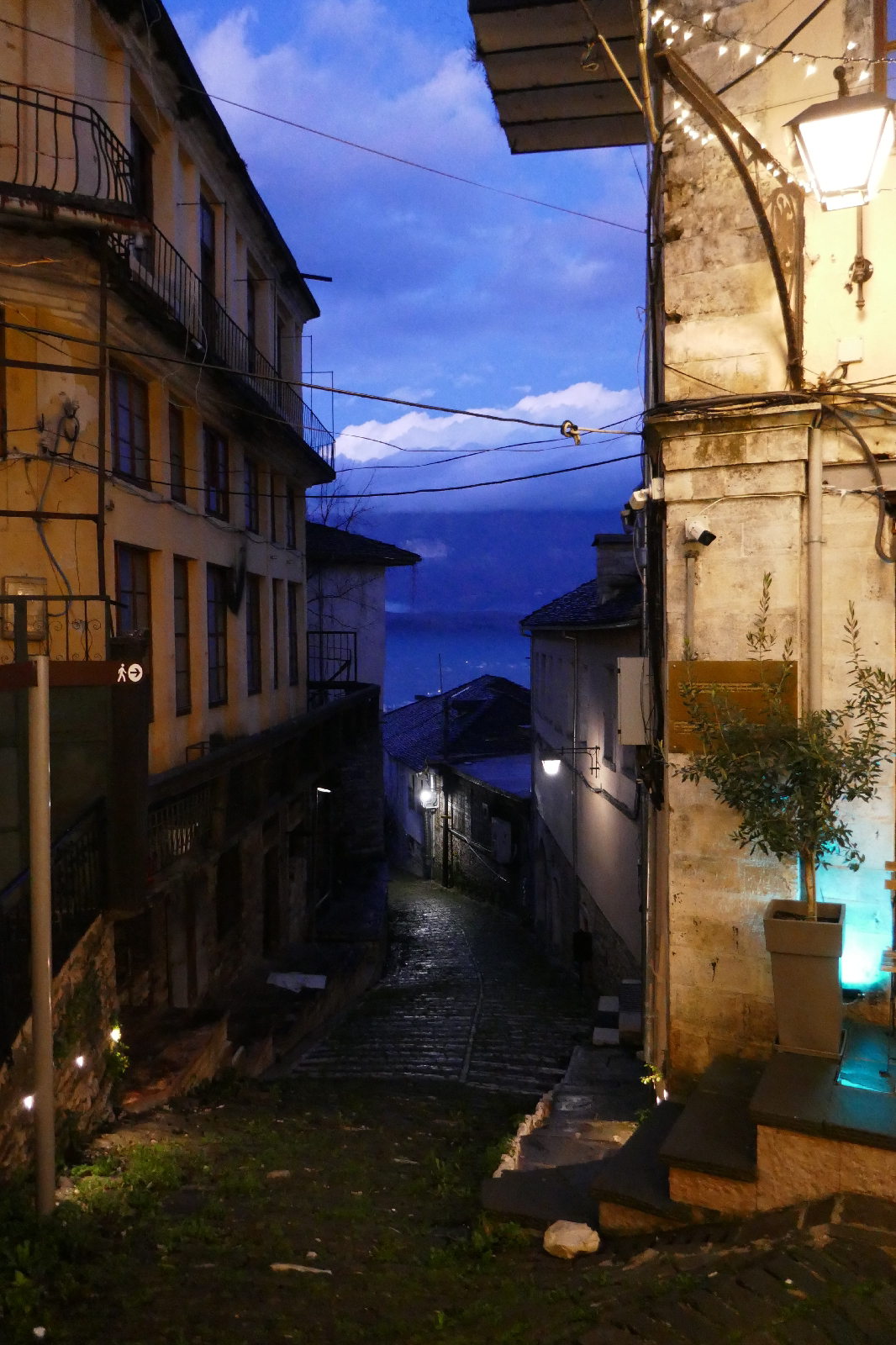




No comments:
Post a Comment